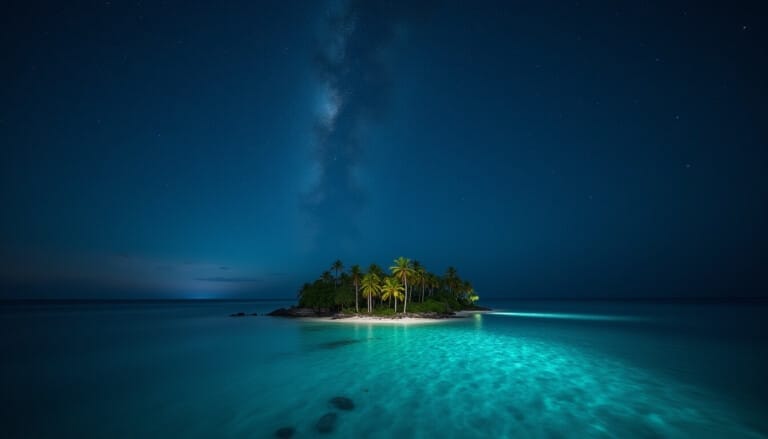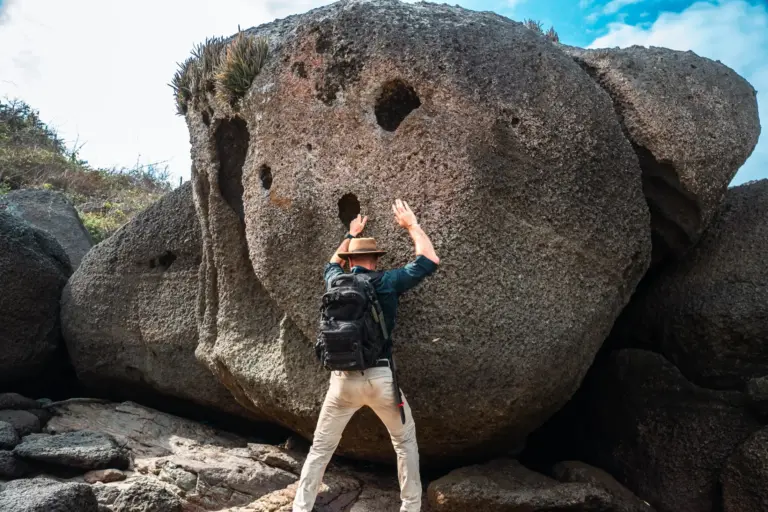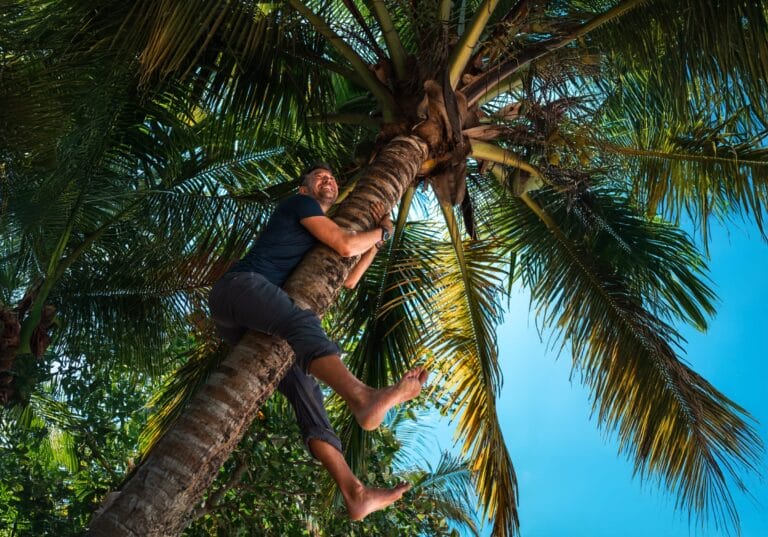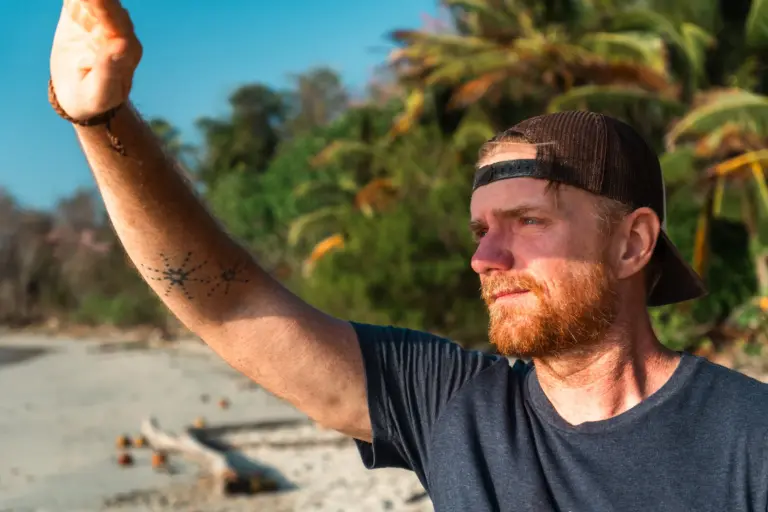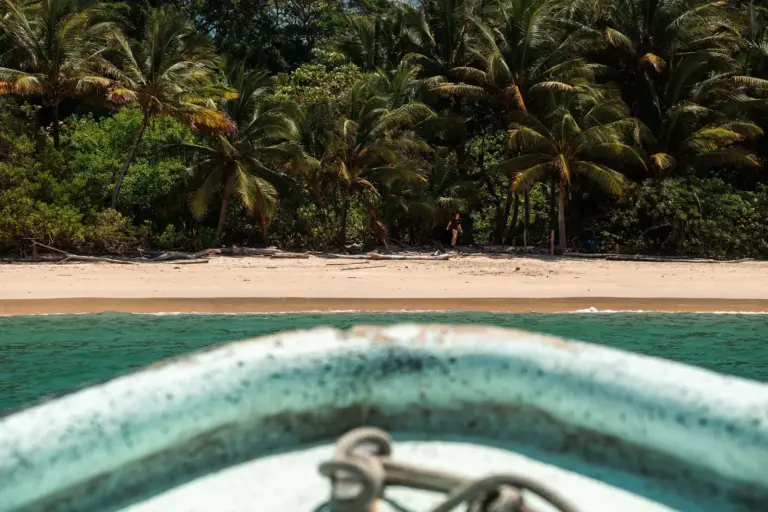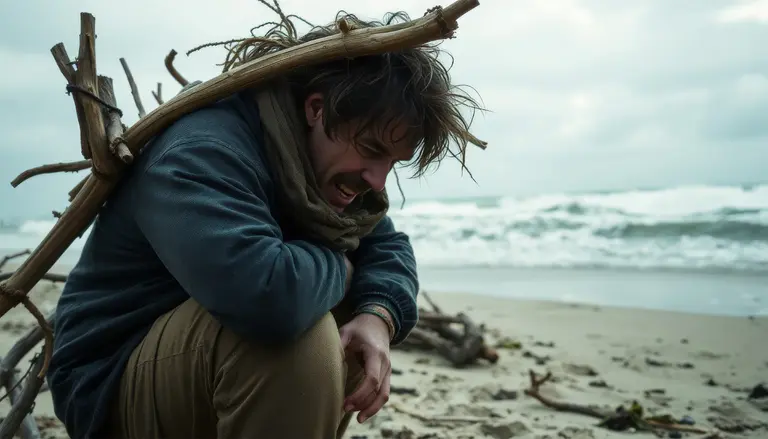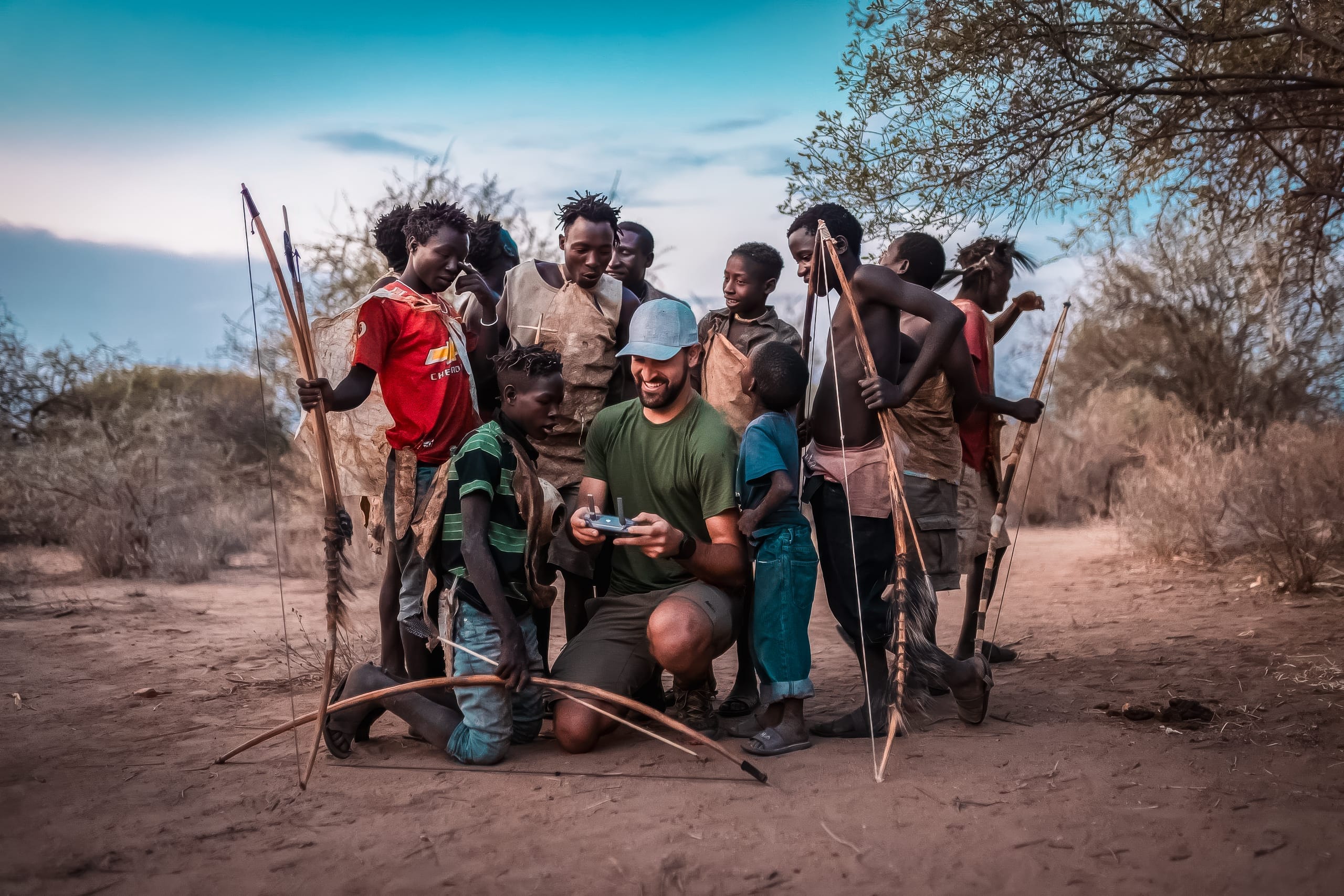
The Last Hunter-Gatherers: Inside the Ancient World of Tanzania’s Hadza Tribe
Who Are the Hadza?
If you want to understand the roots of humanity and real bushcraft, you’ve got to start with the Hadza.
The Hazda—living near Lake Eyasi in northern Tanzania—are one of the last true hunter-gatherer societies left on Earth. No livestock. No fields. No phones. Just bows, arrows, deep-rooted instinct, and the kind of environmental awareness most of us have long forgotten.
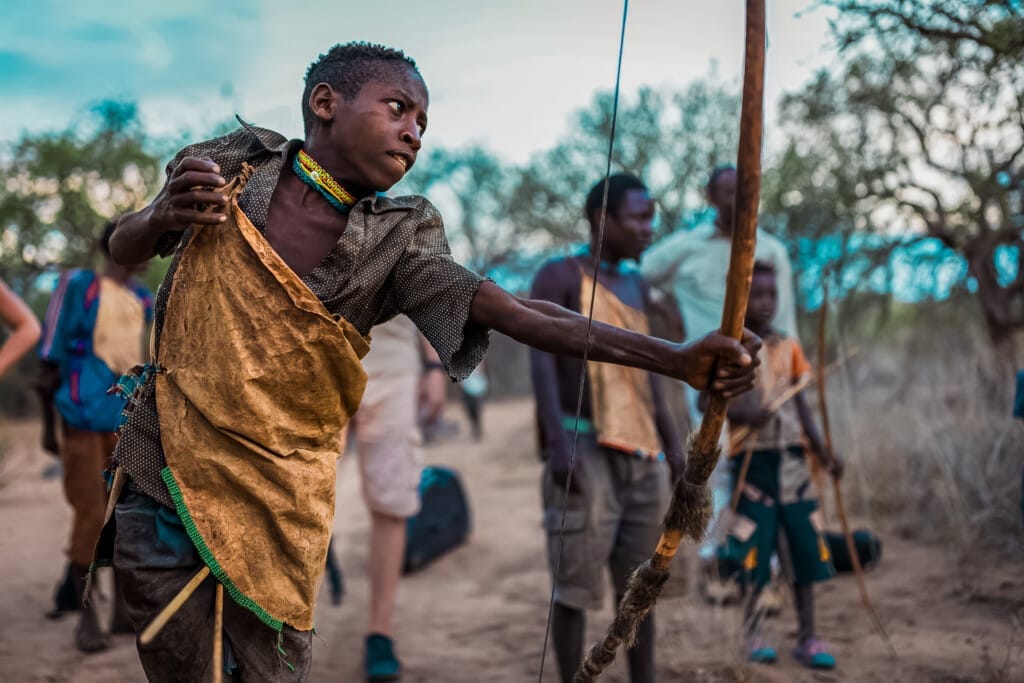
There are around 1,300 Hadzabe left, and they live without permanent homes. Everything they need, they find—or make—with their hands. They track animals across dry, cracked soil. They forage tubers, honey, foots and berries. They drink water pulled from the land and containers made from clay.
Tthen there’s the Greater Honeyguide bird—an wild bird that leads them to hidden beehives in exchange for scraps of wax. If that doesn’t make your jaw drop, I don’t know what will.
To spend time with the Hadza is to encounter a living echo of how all humans once lived—close to the land, bound by community, and free from modern infrastructure.
Tanzania: Land of Origins and Untamed Beauty
Tanzania is more than just where the Hadza live. It’s a place where prehistory and modernity meet—where ancient cultures still shape daily life and vast wild spaces remain untouched.
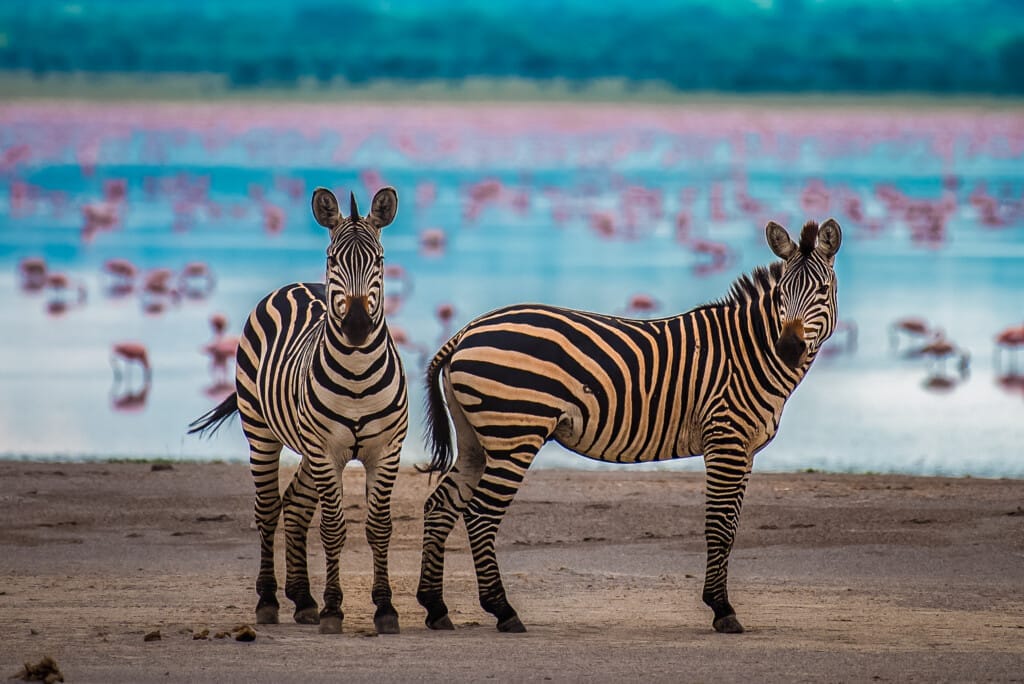
Nestled in the Great Rift Valley, the Lake Eyasi basin is the Hadza’s ancestral homeland. Here, amidst baobab trees and thorny brushland, they connect with the land, follow the dry-season paths of antelope, track the scent of tubers through dusty soil, and gather under stars as their ancestors did.
This same region offers not only cultural depth but breathtaking ecological variety. It’s a land of elephants, leopards, and lions—where the savannah hums with bird calls and unseen life.
We run survival expeditions all over the world—remote beaches, jungle islands—but Tanzania is different. Here, it’s the cradle of humanity. The land feels alive. It teaches. It tests. It strips back everything unnecessary.
A Day in the Life of a Hunter-Gatherer
Each day begins with instinct and motion. Before sunrise, Hadza men rise quietly and walk into the bush with hand-carved bows. They move lightly, tracking small game by footprints, scent, and the twitch of brush.
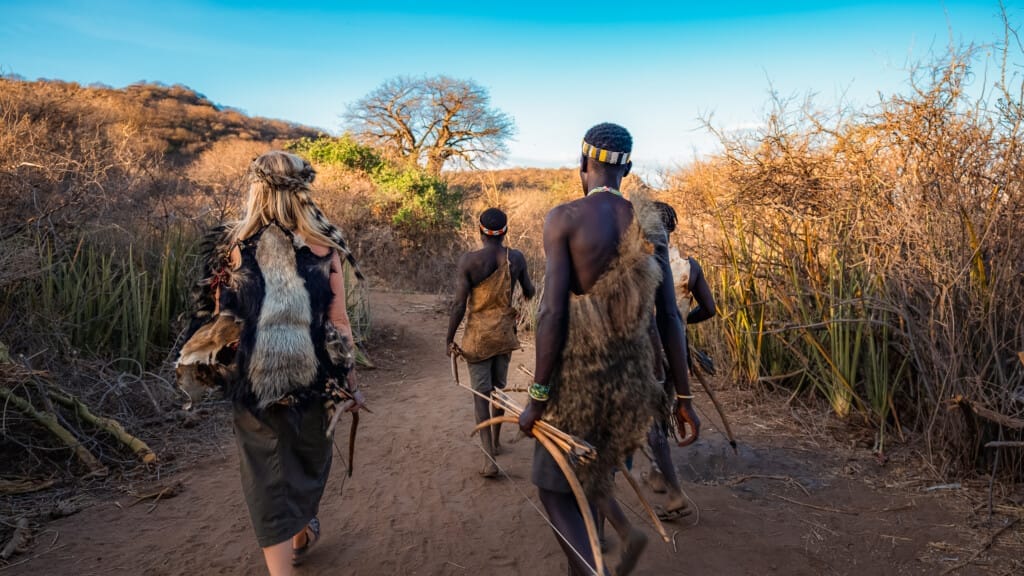
Meanwhile, women and children forage, digging for roots, collecting baobab fruit, and harvesting honey. These tasks are more than chores—they’re the backbone of their food system, informed by generations of knowledge.
There are no watches, no set schedules. Just action, connection, and survival.
Meals are shared. There are no leaders. Consensus rules, and laughter is often the loudest sound at camp. By nightfall, fires are lit and stories begin—a community built not on hierarchy but harmony.
What the Hadza Teach Us
What’s impressive about the Hadza isn’t just their resilience, but how quietly powerful their knowledge is.
They teach by doing. By being.
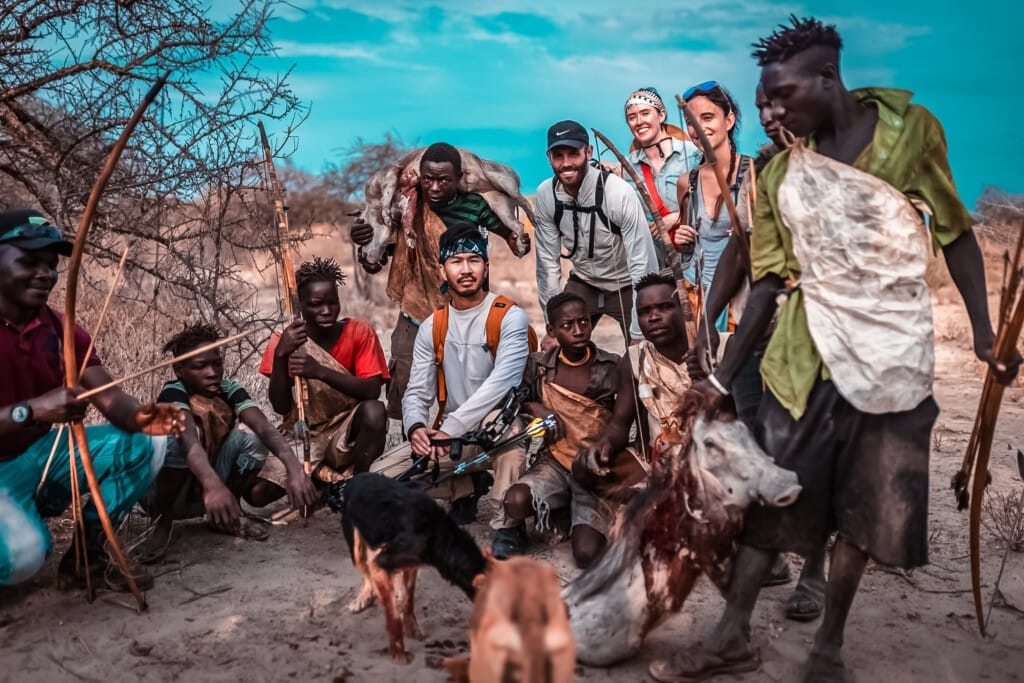
You watch a Hadza build a shelter in an hour from nothing but branches and bark. You learn to start a fire with a hand drill while sweat runs down your nose. You ask how they find water, and they don’t explain—they walk, dig, and there it is by observing bird behaviour or digging in dry creek beds. They will show you which tree will cure a fever or repel insects.
It’s humbling. It’s empowering. It’s the exact opposite of everything modern life has trained you to believe.
This isn’t playing survival. This is survival. Real resilience, real self-reliance, real peace in being present.
Their survival isn’t based on gadgets. It’s based on pure observation and inherited wisdom. And it’s far more robust than most modern systems.
The Power of Oral Tradition and Storytelling
In a world where information is downloaded, the Hadza still rely on memory.
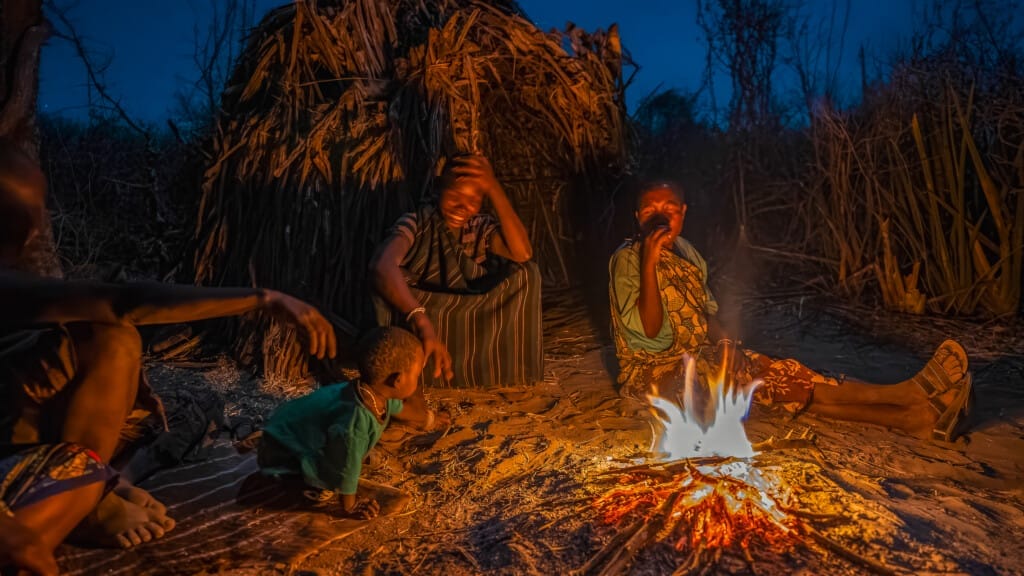
At night, after meals of roasted meat or tubers, the fire becomes a classroom. Elders share stories that teach ethics, strategy, caution, and pride. Some stories are so old they’re thought to predate modern Homo sapiens—and may reflect echoes of extinct hominid experience.
Their language—unwritten, unrecorded—preserves knowledge we could lose in a single generation. When a Hadza storyteller speaks and clicks, they’re holding 10,000 years of memory in their mouth.
Facing Extinction: Why the Hadza Way of Life Is Under Threat
In the last 50 years, the Hadza have lost up to 90% of their land due to farming expansion, private development, and external pressure to settle.
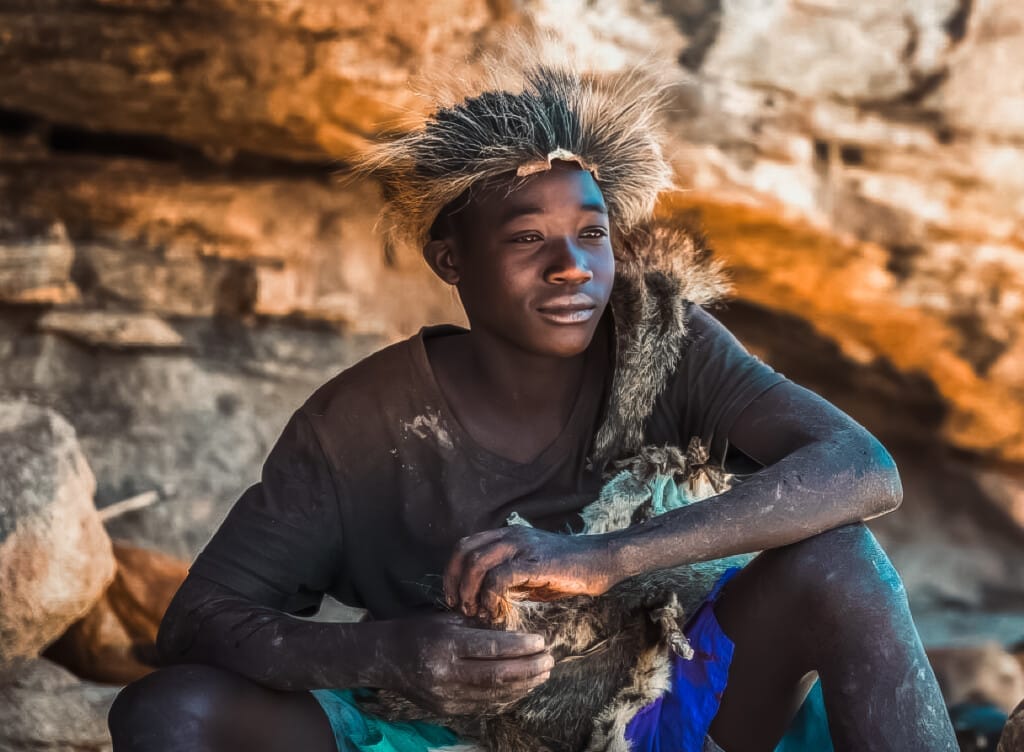
Add to that climate change and a few careless tourists treating their home like a human zoo, and their way of life could vanish within a generation.
Our Commitment to Ethical and Respectful Travel
At Desert Island Survival, we work with the Hadza community to design expeditions that benefit them directly.
We follow strict cultural sensitivity guidelines—limiting group size, asking for permission before engaging in any activity, and ensuring guests understand the context and customs before arrival.
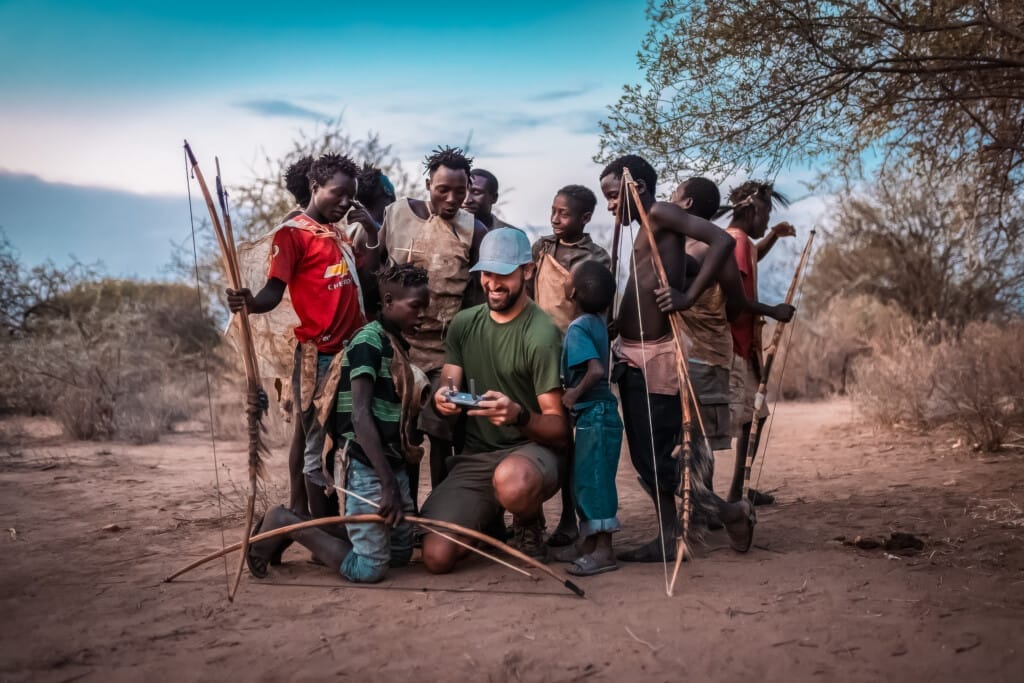
A portion of every expedition fee goes toward community-led conservation and preservation efforts.
Why This Is More Than a Trip
For those who join us, this isn’t just an adventure—it’s a pilgrimage to our ancestors.
You’ll learn ancestral survival skills alongside people who’ve never needed GPS or Gore-Tex. You’ll reconnect with your instincts. You’ll sleep under a sky so wide it makes your problems feel smaller.
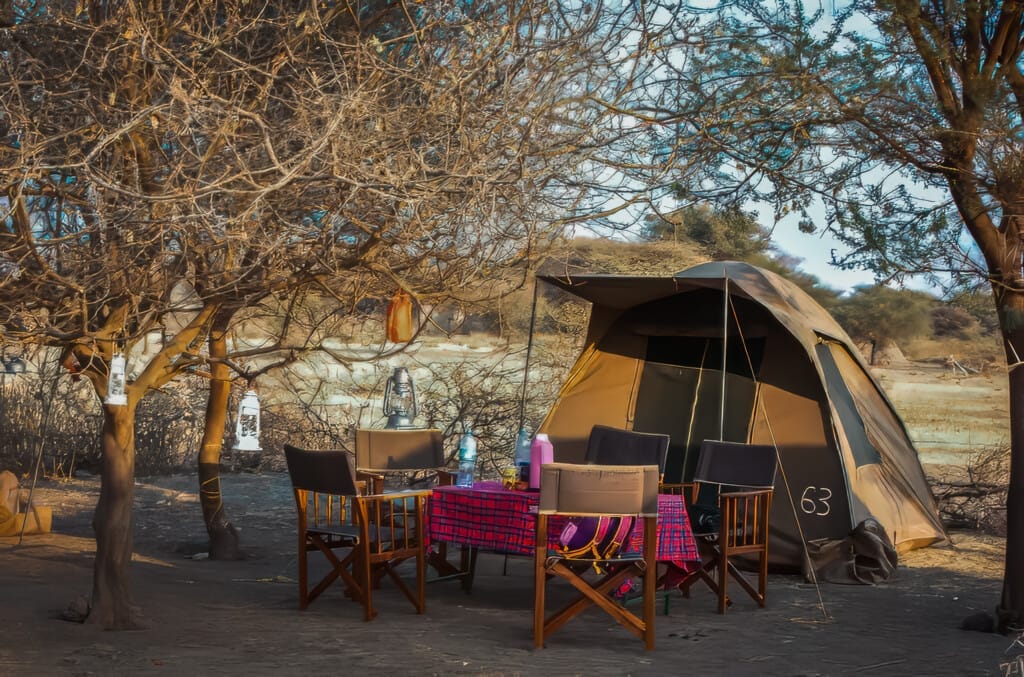
And maybe, just maybe, you’ll remember something that evolution hasn’t erased: that we are all hunter gatherers at our core, yet born into the captivity of modern society.
Tanzania Survival Immersion
If this resonates, join us for a 10-day survival immersion unlike anything else:
- 6 days immersive living with the Hadza — learn fire-making, bow hunting, foraging, and shelter-building (Your own tent or build a shelter)
- 2-day luxury safari — explore Tarangire National Park spotting lions, elephants, giraffes and so much more.
- Decent into the breathtaking Ngorongoro Crater a land teeming with wildlife that time forgot.
- All meals, logistics, expert guides, and proper backup systems
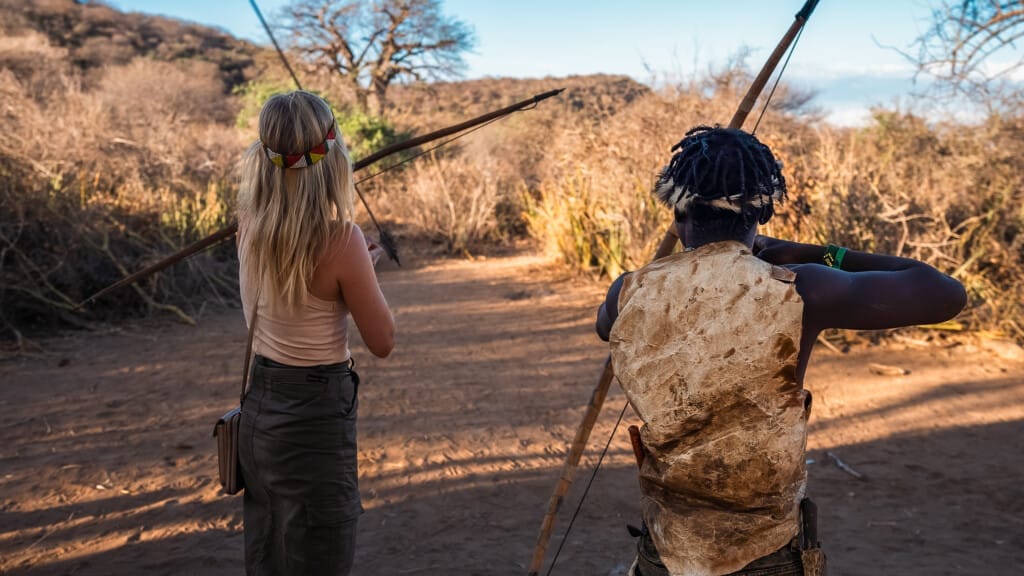
What Makes This Expedition Unique
- Live with one of the few genuine hunter gatherer tribal communities on earth.
- Total disconnection and immersion into a unique way of life which will shift your perception.
- A luxury lodge send-off—because ice cold drinks after a week in the bush just hit different
- Safari wildlife spotting
- Ngorongoro Crater adventure

The Kilimanjaro Add-On (Optional)
Feeling ambitious? Add 10 days climbing Mount Kilimanjaro—the tallest peak in Africa and one hell of a spiritual high point. – drop a note on booking and we will connect you with our awesome partners.
FAQs: What to Know Before You Go
Where will I sleep?
In a personal tent near the Hadza camp; safari portion in a shared or private lodge room.
What will I eat?
Three meals per day, prepared by our chef. Vegan-friendly. Optional shared Hadza food (bush meat or wild tubers).
How fit do I need to be?
Moderate fitness is best, so you can keep up with the Hadza as they hunt but it’s not essential. We’ll provide a prep plan in advance.
Do I need antimalarials?
Yes, recommended. June is dry with low mosquito presence, so we might not see any but better safe than sorry.
What wildlife might I see?
Expect elephants, giraffes, lions, leopards, zebras, and over 500 species of birds.
Where do I fly?
Kilimanjaro International Airport (JRO) — direct flights from Paris, Amsterdam, Doha, and others.
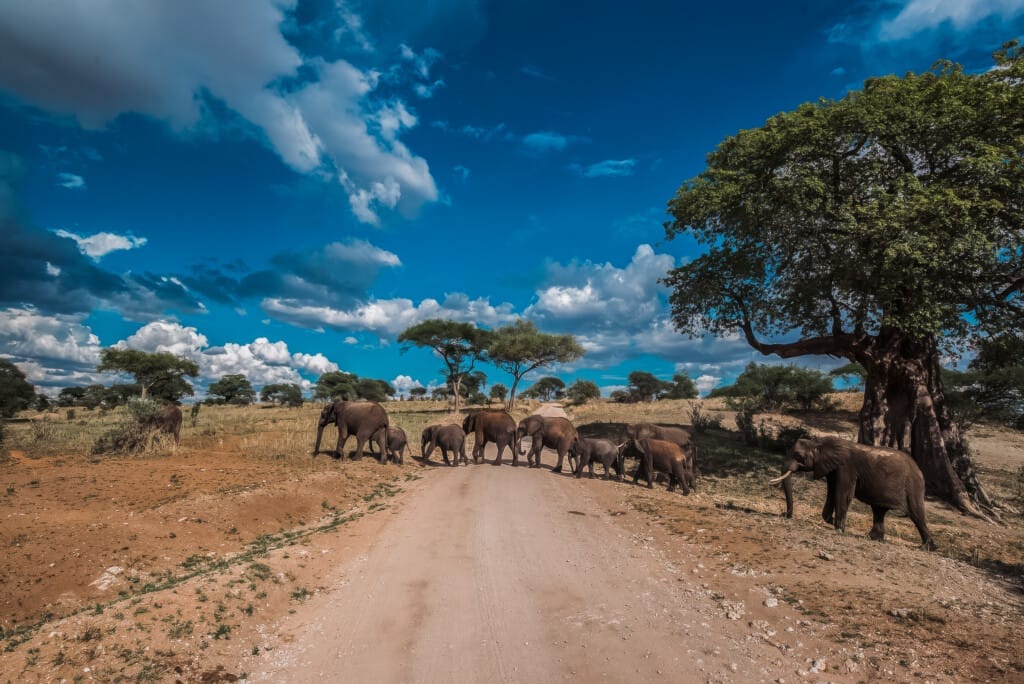
Final Thoughts: Why the Wild Still Matters
The Hadza aren’t historical. They’re living proof. That life can be simple and richer. That we don’t need as much as we think we do. That connection with one another and nature is what makes us stronger, truly richer and happier.
→ Explore the Tanzania Expedition
Join us. Learn. Reconnect. Go home differently.
Sources:
https://news.yale.edu/2014/09/11/hadza-foragers-say-hungry-honeyguides-lead-them-more-honey
https://cultureandmind.sites.sheffield.ac.uk/fieldsites/hadza
https://www.survivalinternational.org/articles/119/3172-there-are-medicines-out-there-that-i-know-about
https://www.labrujulaverde.com/en/2023/12/legends-of-the-hadza-people-are-so-ancient-that-they-may-refer-to-extinct-hominid-ancestors
https://education.nationalgeographic.org/resource/hadza/


